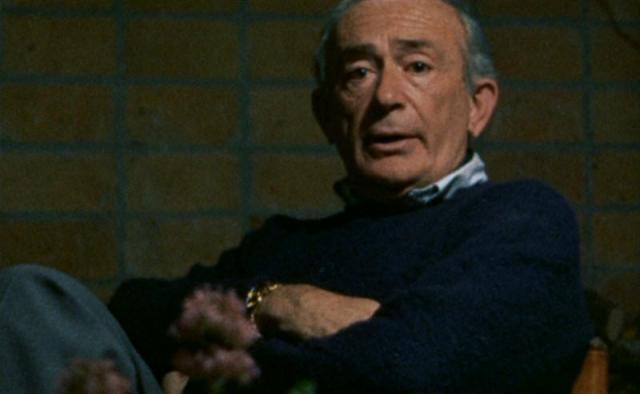Recently, Future Funk/Electronic artist Moe Shop released a new track called “Love Taste”, a funky, catchy, and yet oddly unsettling song. Featuring the voice of Jamie Page and a great rap intermission from Shiki, this song describes the obsessive love one girl has for a guy's… sticky love. It’s as dirty as it sounds, yet only gets explicit when Shiki enters the scene, seemingly describing what lengths the singer has gone to get a taste.
From my initial listen, I believed the song was celebrating the trope of girls who are so crazy in love that they actually become crazy. A recent example would be Anna from Shimoneta, which was played for laughs and slight parody. But here, it felt like Moe Shop was desiring this kinda creepy scenario.
Yet, the more I listened to this song, the more I realized that there is a darker side to this song. “Love Taste” is not an approval of this character type, but rather a sinister exploration taken from both perspectives of the relationship: the oblivious center of her affections, and the dangerous thoughts of the girl crazy with love.
From my initial listen, I believed the song was celebrating the trope of girls who are so crazy in love that they actually become crazy. A recent example would be Anna from Shimoneta, which was played for laughs and slight parody. But here, it felt like Moe Shop was desiring this kinda creepy scenario.
Yet, the more I listened to this song, the more I realized that there is a darker side to this song. “Love Taste” is not an approval of this character type, but rather a sinister exploration taken from both perspectives of the relationship: the oblivious center of her affections, and the dangerous thoughts of the girl crazy with love.
You can listen to the song here to be involved in the analysis, and while you’re there give Moe Shop’s other stuff a listen as well, it’s fantastic stuff!
The first verse is harmless enough, the girl describes the “boy” as perfect and how she’s infatuated after one “taste”. While there are some possible warning signs, there’s nothing too out of the ordinary for a love song.
The next verse gets more initiate, invading the boy’s, and in turn the listener’s, personal space: “ I I wanna touch it, I’ll never have enough”” She even out right says “I love you.” At this point, the girl is fully committed to this relationship, becoming obsessive and a little creepy. Also, throughout these two verses, she continual repeats the line “Boy, you’re perfect”, which only reiterates the stalkerish vibe.
The chorus begins by confirming this obsessive behavior: "I want your everything, every single part of you.” It’s a deceitfully catchy chorus that almost distracts the listener from the stalker-ish lyrics. The verse ends with the alarming statement “I kill you if you try to run, you’re mine and mine alone.”
After dropping this bomb of homicidal threats, Shiki breaks into his verse with a declaration of dominance: “Girl taste my love every single last drop, Won’t be satisfied baby till you begging me to stop” This affirmation of alpha maleness continues as Shiki describes how cool he his and how hot every girl thinks he is. Yet, immediately after, the verse changes in tone musically and lyrically. The music becomes slightly darker, turning into a build up to something. At the same time, Shiki describes a situation where someone, supposedly the girl in the song, begins to get rough with him, drugs him, ties him to the bed, and has her way with him in his delirious state.
While he does eventually take back the advantage and the section returns to its cocky tone, describing the fan girls who love his voice. But, there’s this undercurrent of subservience, as he mostly repeats himself and even talks about she hypnotized him. These feelings are confirmed when the rap ends with Shiki rejecting all the fan girls because “They don’t love you like I do”
Immediately after the line is said, the girl takes over the song, repeating this one line with a somewhat distorted voice as the music slows down to a unnerving level. During this section, random voices can be heard scrambled in the mix, and Shiki’s line is sometimes heard, slowed down to sound demonic. For over 20 seconds this goes on, becoming more and more creepy as it continues. But then, the song returns to normal, repeating the chorus twice before ending.
With all the evidence out there, I believe the song is about how the girl’s obsession has become mental insanity, and the guy can’t look at the obvious signs of crazy because he loves how aggressive she is in bed. He soon becomes the one obsessed, as her actions start to consume her, encompassing her life. By the end of this process, she is a homicidal maniac who believes that the boy is her’s, and her’s alone.
Immediately after the line is said, the girl takes over the song, repeating this one line with a somewhat distorted voice as the music slows down to a unnerving level. During this section, random voices can be heard scrambled in the mix, and Shiki’s line is sometimes heard, slowed down to sound demonic. For over 20 seconds this goes on, becoming more and more creepy as it continues. But then, the song returns to normal, repeating the chorus twice before ending.
With all the evidence out there, I believe the song is about how the girl’s obsession has become mental insanity, and the guy can’t look at the obvious signs of crazy because he loves how aggressive she is in bed. He soon becomes the one obsessed, as her actions start to consume her, encompassing her life. By the end of this process, she is a homicidal maniac who believes that the boy is her’s, and her’s alone.
Instead of being a fantasy where the obsession turns into a great relationship, it takes a darker and more realistic turn towards the mental disturbed and hostage style relationship. It’s a fucked up, dirty song that I can’t stop listening too, and I love every second of it.
This much analysis is interesting to me because it’s for a Moe Shop song, an artists whose songs are usually well made, catchy dance songs inspired by anime. While this is not to say that they don’t have deeper meanings, “Love Taste” is the first that seems to have an explicit message and point behind it, a meaning meant to be deciphered. It’s also one of the few Moe Shop song to have sung lyrics and not jumbled anime samples or rap lines. I hope that this song is a showcase of where Shop’s music is going, because if it’s full of analysis opportunities and catchy hooks, I’m all in.







